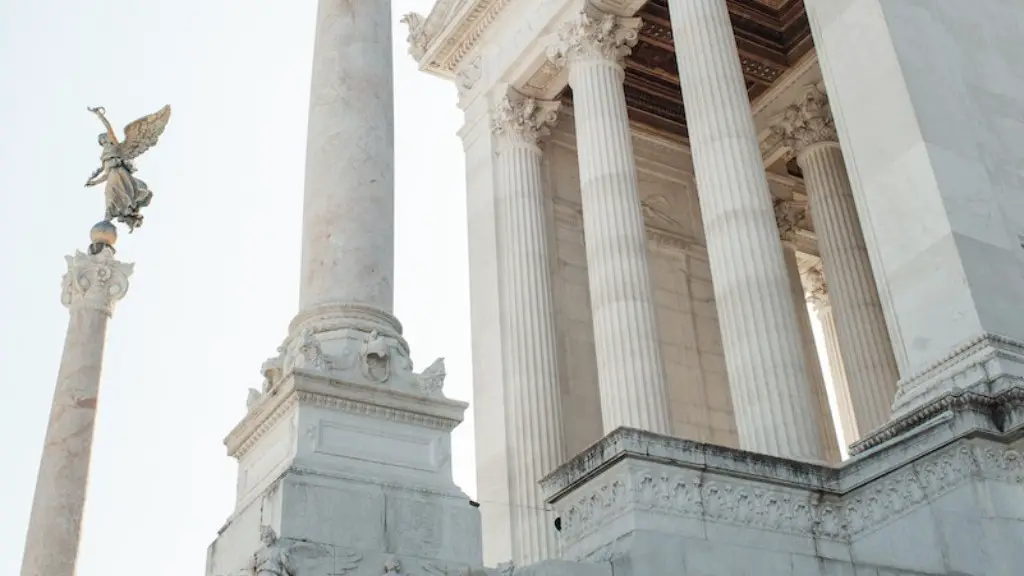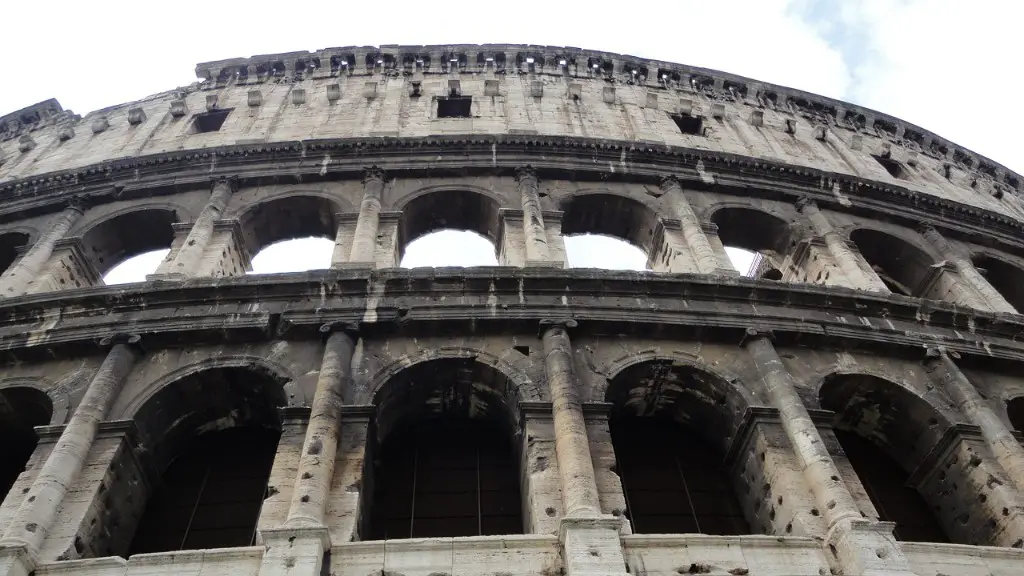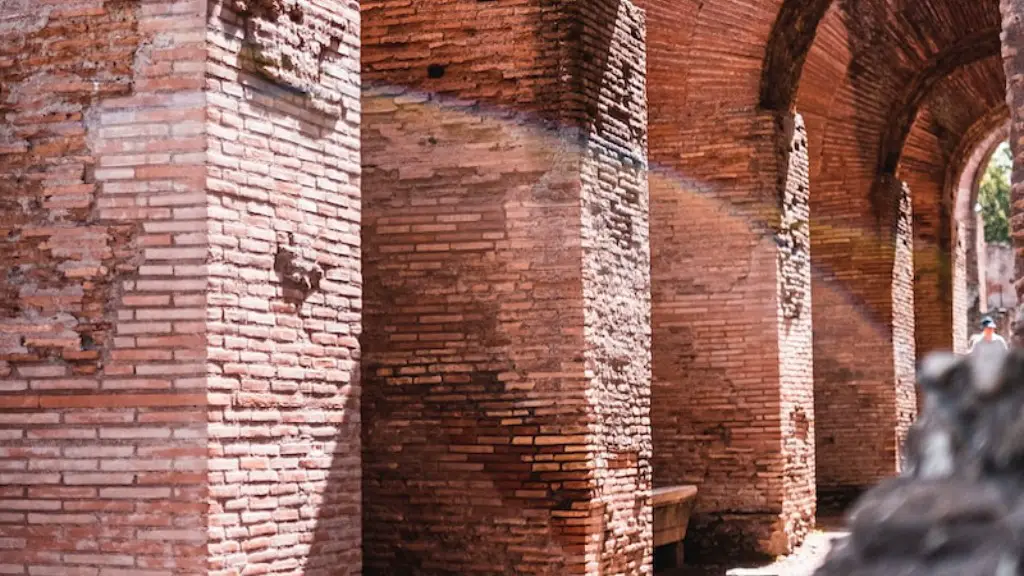The ancient Romans were known for their engineering and construction abilities. They built roads that were not only straight and well-made, but also durable. Many of the roads built by the Romans are still in use today.
The Roman roads were built for the purpose of military transportation and were constructed by the Roman army engineers. The roads were designed to be straight and were built with a camber so that water would drained off to the sides. The roads were constructed with a foundation of large rocks and stones and then paved with smaller rocks and stones.
What did the Romans use to build roads?
Most Roman roads were built using a combination of earth, gravel, and crushed bricks. The most prestigious roads had a top surface of dressed stone blocks, cobbles, or slabs of volcanic tuff, limestone, or basalt. This made for a very sturdy and reliable road surface that could withstand a lot of wear and tear.
In ancient times, roads were built for the purpose of trade and transportation. The main objective was to build a road network that would connect different parts of the country and facilitate trade. In order to achieve this, roads were aligned as a series of straights with changes of direction taking place at high points. This ensured that the roads were able to connect different parts of the country without any major obstacles. In addition, rivers were preferably crossed at fords, which were then mainly paved. This helped to reduce the risk of flooding and made it easier for people to cross the river.
How do Roman roads last so long
The roads that the ancient Romans built were some of the most impressive feats of engineering in their time. The roads were made from aggregates – lots of different sized stones that compacted down to create a strong, stable and long-lasting surface. These roads could stand up to the marching of hundreds of soldiers, and carts laden with supplies. The roads built by the Romans were an essential part of their empire – they allowed for quick and easy transportation of people and goods between different parts of the empire.
Roman roads were built for many reasons. One was so that rain water would run off and not pool on the surface. This made them safer to travel, especially for the Roman soldiers. But merchants also used them to carry goods all over the empire.
Did Roman roads use concrete?
The Roman roads were some of the most impressive feats of engineering in the ancient world. They were notable for their straightness, solid foundations, cambered surfaces facilitating drainage, and use of concrete made from pozzolana (volcanic ash) and lime. The Roman roads allowed for the rapid movement of troops and supplies across the vast empire, and their lasting legacy can still be seen in many modern roads.
Rome’s vast empire was held together by an extensive network of roads. This allowed for the movement of troops and supplies quickly and efficiently. Even after the empire fell, the road system remained unmatched for centuries.
Do any Roman roads still exist?
Roman roads are an impressive engineering feat and it’s amazing that many of them are still visible and in use today. It’s a testament to the Roman empire’s lasting legacy.
The original purpose of the Roman roads built on a slant was to allow rain water to drain away, so that the roads would not become too muddy. This was done by surveying the land to make sure it was level, and then marking out the road with wooden stakes. Over time, the slanted roads became a standard design, even when there was no need to drain away water.
Why were Roman roads so impressive
Roman roads were built for a variety of reasons, including the transportation of military troops, the movement of officials and civilians, the carriage of official communications, and the trade of goods. Roman roads were of several different types, depending on their purpose and location. Some were small local roads, while others were large highways that connected cities, towns, and military bases.
Today, we have access to much better materials and technologies for building roads than the Romans did. Through the use of interlayers, we can now build roads that are much stronger and more durable than Roman roads ever were. Additionally, modern roads can safely accommodate much heavier traffic loads than Roman roads ever could. In many ways, we have surpassed the Romans in terms of road-building technology and expertise.
Can you still walk Roman roads?
The first Roman roads were built over 2,000 years ago and were an important part of the Roman Empire. These roads allowed for trade and transportation between different parts of the empire. The first Roman roads were made from dirt and gravel and were later paved with stone. The most famous Roman road is the Appian Way, which stretched from Rome to the southern tip of Italy.
The average depth of metalling on Roman roads is about 51 cm (20 in). However, there is great variation in this number, with some roads having depths as little as 10 cm (4 in) and others having depths up to 4 m (13 ft). This variation is likely due to the fact that these roads were built up over centuries.
How many layers did Roman roads have
Roman roads were built with four layers. The bottom layer was called the statumen and it was made of large stones. The next layer was called the rudus and it was made of gravel in concrete. The top layer was called the nucleus and it was made of sand and smaller gravel in concrete.
There is no denying that the Roman military played a significant role in the construction of the roads of the Roman Empire. However, it is important to note that there were also other individuals and groups who contributed to the construction of these roads. While the Roman military may have been responsible for a majority of the work, they were not the only ones responsible for the construction of these roads.
How many miles did Roman roads cover?
The Roman road system was one of the most impressive feats of engineering in the ancient world. At its peak, the system spanned 53,000 miles (85,300 km) and contained about 372 links. The Romans were able to construct such an extensive network of roads due to their advanced engineering skills. The roads were used for military, commercial and political purposes, and allowed the Romans to maintain their vast empire.
Al-tobermorite is a very rare hydrothermal mineral that is known to give Roman concrete its strength. It can be made in the lab, but it is very difficult to incorporate it into concrete.
How thick were Roman roads
Roman roads were built to last, with a sand-and-mortar bed that was as thick as 5 feet. This allowed for a sturdy foundation that could support a heavy traffic load. The roads were also designed to be drainage channels, with a raised center that would allow water to run off to the sides. This helped to keep the road surface from becoming too muddy and slippery.
Ancient Roman structures are known for their strength and durability, which is largely due to the fact that they were built using a special cement recipe that took a long time to develop. While modern cement may not be as strong as the ancient Roman kind, it has the potential to reach that level of strength over time.
Warp Up
The ancient Romans built roads by using two main methods. The first method was to build a foundation of large stones, and then to build a road surface of smaller stones on top of the foundation. The second method was to build a wooden road surface on top of a foundation of large stones.
The ancient Romans were able to build roads that are still used today by utilizing a system of stones and bricks. The interlocking system of the stones and bricks allowed for a strong foundation that could support a lot of weight. This method of construction is still used in some parts of the world.





